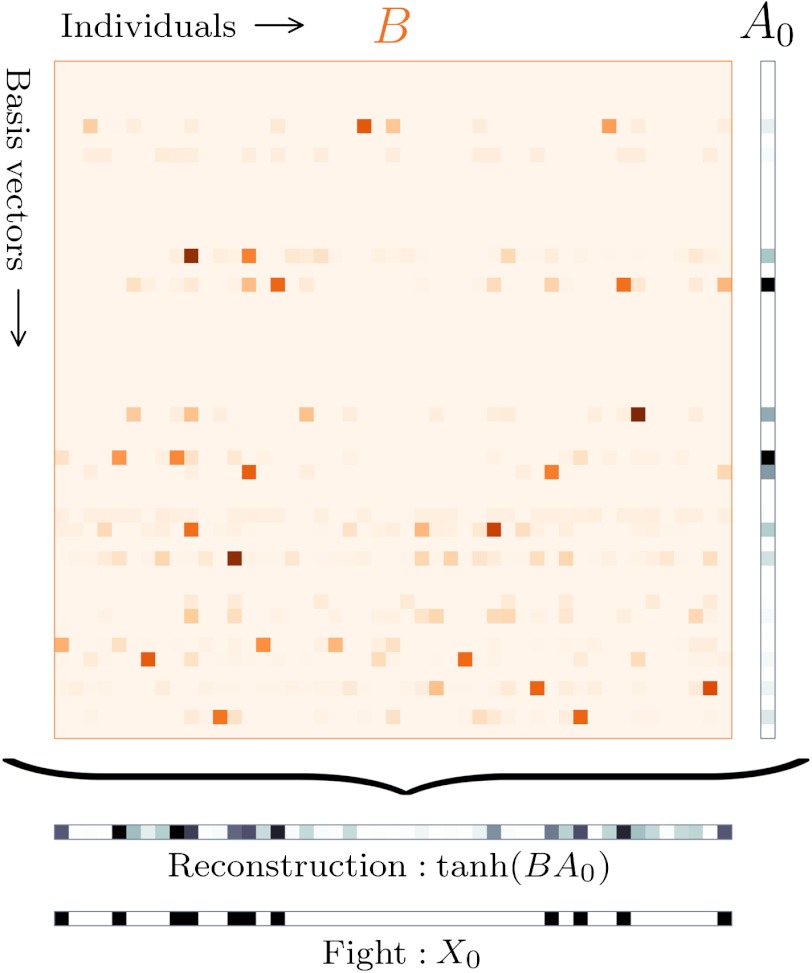Fig. 1.
Representing a fight using a sparse basis. To represent a fight X0, coefficients A0 define a sparse linear combination of basis vectors BA0 that is passed through the nonlinear activation function tanh. Here λ has been tuned to produce optimal out-of-sample predictions; note that this produces sparse basis vectors that consist of small sets of individuals. Sparsity of the data implies that if one knows B and only the few active elements of A0, one can come close to reconstructing the entire fight. Furthermore, by remembering B, the likelihood of future fights can be estimated by determining the necessary magnitudes of coefficients A0: fights that can be represented using fewer large coefficients are more likely. In this figure and in Fig. 5, darker colors represent elements with larger magnitude (see Materials and Methods).

